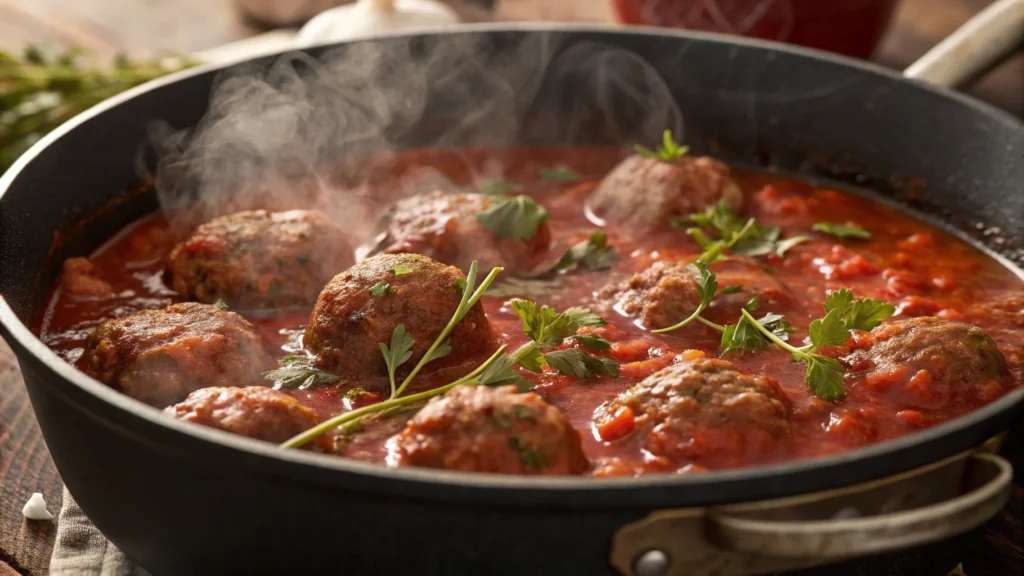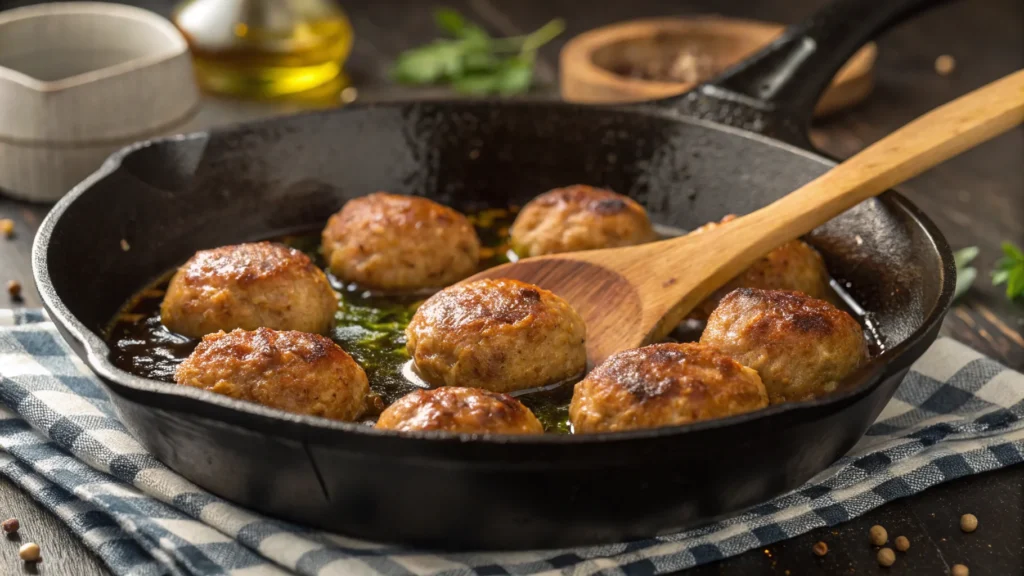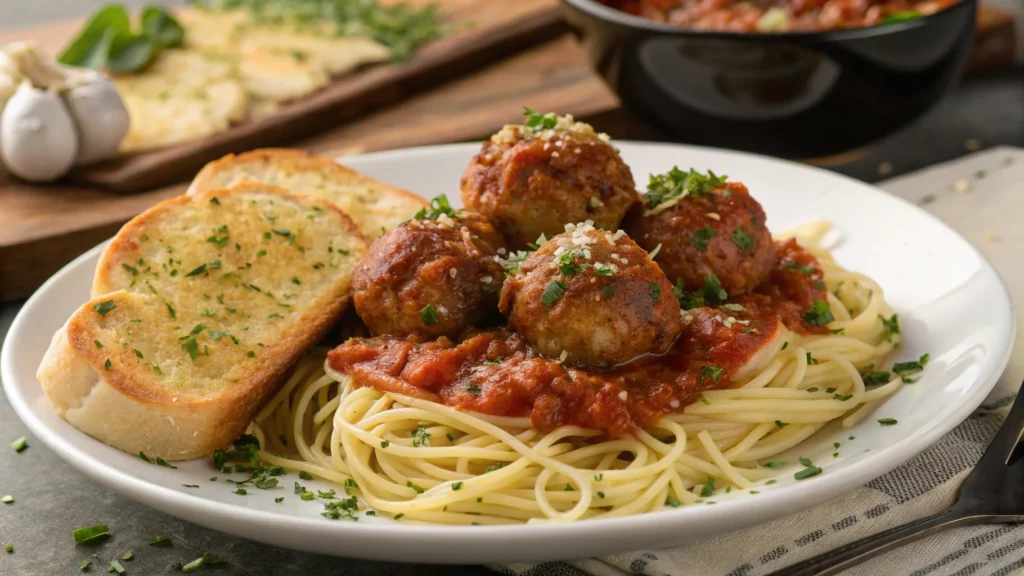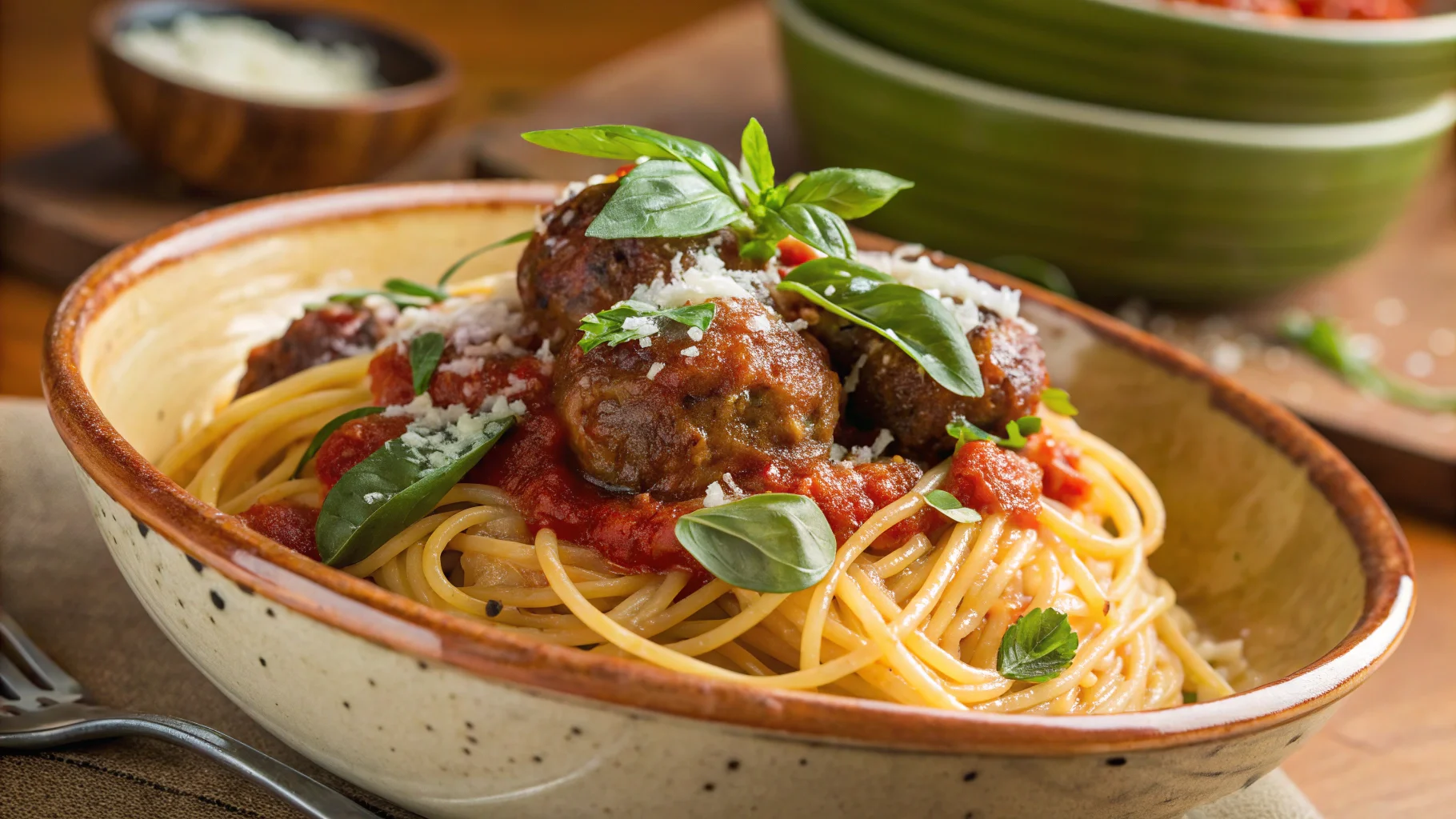Meatballs are a beloved staple in kitchens worldwide, from Italian Sunday dinners to Swedish smorgasbords. But there’s a debate that has many home cooks scratching their heads: Should meatballs be fully cooked before putting them in sauce? This question touches on food safety, flavor development, and even cultural traditions. In this article, we’ll explore the science and art behind cooking meatballs, whether to sear them first or let them simmer raw in a flavorful sauce, and provide expert tips to help you perfect your recipe.
Let’s dive into this culinary conundrum, beginning with the methods used to cook meatballs and their role in various cuisines.
Table of contents
Introduction to Meatball Cooking Methods
The Role of Meatballs in Global Cuisines
Meatballs aren’t just a classic Italian-American comfort food; they have a long, storied history. From Middle Eastern kofta to Asian lion’s head meatballs, these versatile bites appear in nearly every cuisine. While ingredients and seasonings differ, the cooking method often determines their final flavor and texture. Whether baked, fried, or simmered, each technique serves a purpose.
Overview of Popular Cooking Techniques for Meatballs
When it comes to meatball preparation, you’ve got a few options. Some cooks brown them in a skillet, giving them a caramelized crust that locks in juices. Others bake them for a healthier spin. Then there’s the simmering method, where meatballs are added raw to sauce and cooked gently. Each approach has its champions, but the real question is which method works best in a hearty sauce.
No matter your preference, the method you choose affects everything from texture to flavor absorption, making it worth understanding these techniques in detail.

Raw vs. Cooked Meatballs in Sauce
Comparing Techniques: Adding Raw vs. Fully Cooked Meatballs
When deciding whether meatballs should be fully cooked before putting them in sauce, many cooks face a tough choice. Adding raw meatballs directly into the sauce has its perks—it allows the flavors of the meat to infuse into the sauce as they cook together. However, this method can also be tricky. If not handled properly, raw meatballs may break apart, leaving a gritty texture in your sauce.
Fully cooking meatballs beforehand, either by frying or baking, offers more control. The outside gets a lovely caramelized crust, which locks in juices and adds a depth of flavor. While this step takes extra time, it ensures the meatballs hold their shape when simmered in sauce. For recipes requiring a long simmer, raw meatballs can work beautifully. But for a quicker sauce, pre-cooked meatballs might be the way to go.
Reasons for Cooking Meatballs First: A Practical Guide
Why do so many recipes recommend fully cooking meatballs before adding them to the sauce? One word: consistency. Browning meatballs creates a Maillard reaction, giving them a rich, savory flavor that complements the sauce. Plus, pre-cooking ensures the meatballs reach a safe internal temperature before serving.
On the other hand, some recipes, particularly traditional Italian ones, embrace simmering raw meatballs for hours. This method creates a hearty, well-rounded dish as the sauce absorbs the natural juices and fats from the meat. But if time is short or you’re working with delicate ingredients, pre-cooking is often the better option.
Ultimately, the question of should meatballs be fully cooked before putting in sauce? depends on the recipe, cooking time, and your personal preference for flavor and texture.
Food Safety Concerns
Safe Cooking Temperatures for Ground Meats
When handling raw meat, food safety is critical. Ground meats like beef, and chicken require a thorough cooking process to eliminate harmful bacteria. According to the USDA, the safe internal temperature for cooked meatballs is 160°F (71°C) for beef, and 165°F (74°C) for poultry. If you’re adding raw meatballs to sauce, it’s crucial to check their temperature before serving to avoid undercooked spots.
Fully cooking meatballs beforehand simplifies this process since they’re already guaranteed to be done. When simmering raw meatballs, though, maintaining a steady heat ensures they cook evenly without falling apart.
Health Risks Associated with Undercooked Meat
So, what happens if meatballs aren’t fully cooked before going into the sauce? For starters, undercooked ground meat can harbor harmful bacteria like E. coli or Salmonella. These risks increase if the sauce doesn’t simmer long enough to thoroughly cook the meat.
Moreover, large meatballs may not cook through evenly when added raw, even after an extended simmer. This makes fully cooking them first an extra layer of safety, particularly when serving young children, pregnant women, or anyone with a compromised immune system.
Ultimately, whether you cook meatballs fully before adding them to sauce or not, it’s essential to follow safe cooking practices to avoid health risks. This makes the question, Should meatballs be fully cooked before putting in sauce?, not just about flavor but safety too.
Texture and Flavor Development
The Science of Meatball Texture
The texture of meatballs can make or break a dish. When meatballs are browned before adding them to the sauce, the exterior develops a slight crust that holds in moisture. This prevents them from becoming mushy during simmering. On the other hand, raw meatballs cooked directly in sauce tend to be softer, absorbing more of the liquid. While this creates a tender bite, it might lack the satisfying contrast between the crusty exterior and juicy interior that pre-cooking offers.
How Sauce Enhances Flavor in Both Raw and Cooked Meatballs
When asking, Should meatballs be fully cooked before putting in sauce?, consider the role of flavor absorption. Raw meatballs impart a rich, meaty essence to the sauce as they cook. The fats and juices slowly mix into the liquid, deepening its taste. However, this can thin out the sauce, requiring adjustments with tomato paste or seasonings.
Conversely, cooked meatballs add less to the sauce’s flavor but retain their seasoning and a distinct meat-forward taste. It’s a trade-off: raw meatballs make the sauce shine, while cooked ones keep their own bold flavor. Ultimately, the choice depends on the dish you’re creating.

Cooking Methods and Their Impact
Frying vs. Baking Meatballs: Pros and Cons
Both frying and baking meatballs before adding them to the sauce have unique advantages. Frying creates a golden-brown crust that locks in flavor and moisture. However, it’s more labor-intensive and can add extra fat. Baking, while less messy, offers a healthier alternative, cooking the meatballs evenly with minimal oil. If you’re preparing a large batch, baking is more efficient.
Slow Cooking and Its Effects on Meatball Integrity
Adding raw meatballs to a slow cooker or simmering them in a Dutch oven allows them to cook gently over hours. This method works best for robust sauces that can handle the extra fat and juices from the meat. While this technique ensures tenderness, it risks the meatballs breaking apart if they aren’t tightly packed or well-bound with breadcrumbs and eggs.
For more tips on slow-cooked recipes, check out this spaghetti and meatballs in a Dutch oven recipe from Recipesolly! It offers insights into balancing flavors and textures for perfect results.
Cultural and Traditional Perspectives
Italian Traditions: Simmering Raw Meatballs in Sauce
In Italian cooking, the practice of simmering raw meatballs directly in sauce is a time-honored tradition. This method is especially common in southern Italian recipes, where the sauce is typically cooked for hours. Raw meatballs, often made with a blend of beef, and veal, infuse the sauce with their natural juices and fat, creating a deeply flavorful base.
This technique answers the question, Should meatballs be fully cooked before putting in sauce?, by emphasizing the harmony between the meat and the sauce. The prolonged cooking process ensures the meatballs are thoroughly cooked and tender while enriching the sauce with a bold, meaty flavor.
Regional Variations in Cooking Meatballs
Around the world, cultural preferences shape how meatballs are prepared. In Swedish cuisine, for example, meatballs (köttbullar) are browned before being served with a creamy gravy rather than simmered in sauce. Similarly, Middle Eastern kofta is often grilled or fried, showcasing bold spices and a crispy exterior.
Each tradition highlights different aspects of flavor and texture, but all underscore the importance of technique. Whether simmered raw or pre-cooked, the decision depends on the dish’s cultural roots and the flavors you want to emphasize.
Expert Tips and Tricks
Prepping Meatballs for Even Cooking
Regardless of your method, preparation is key. Use breadcrumbs or soaked bread to bind the meat and prevent it from falling apart, especially when simmering raw. Additionally, chilling the formed meatballs before cooking helps them maintain their shape.
For those wondering, Should meatballs be fully cooked before putting in sauce?, this step is particularly crucial. Pre-cooking can prevent undercooking in large meatballs, while raw-simmering benefits from a firm, well-bound texture.
Enhancing Flavor with Spices and Herbs
Seasoning is another area where you can elevate your meatballs. Fresh herbs like parsley or basil, along with garlic, onions, and a touch of parmesan, add depth. When browning meatballs, a sprinkling of salt enhances the crust’s flavor, creating a perfect contrast to the sauce.
Experimenting with seasonings and techniques lets you tailor meatballs to your preferences while ensuring they’re as delicious as possible.
Frequently Asked Questions
How Long Should Meatballs Cook in Sauce?
The cooking time for meatballs in sauce depends on their size and whether they’re added raw or pre-cooked. For raw meatballs, plan to simmer them for at least 30 to 45 minutes to ensure they’re fully cooked and tender. Smaller meatballs may cook more quickly, while larger ones require a longer time to reach a safe internal temperature of 160°F (71°C) for beef or 165°F (74°C) for poultry.
Pre-cooked meatballs, on the other hand, only need about 10 to 15 minutes in sauce to reheat and absorb the flavors. Whether you choose raw or pre-cooked, always check for doneness before serving.
Should I Always Brown Meatballs First?
Browning meatballs adds a savory crust that enhances both flavor and texture. However, it’s not always necessary. If your recipe calls for long, slow simmering, adding raw meatballs can infuse the sauce with a rich, meaty taste. The answer to Should meatballs be fully cooked before putting in sauce? depends largely on your cooking method and desired results.
Final Recommendations and Best Practices
Tailoring Your Method to the Recipe
Choosing the right method for cooking meatballs comes down to your recipe and preferences. For quick recipes, pre-cooking meatballs ensures safety and saves time. If you’re preparing a traditional dish like Italian Sunday sauce, simmering raw meatballs can yield a hearty, flavorful result.
Regardless of the method, it’s essential to balance texture and flavor. Larger meatballs often benefit from pre-cooking to guarantee even doneness, while smaller ones may fare better when cooked directly in sauce.
Practical Tips for Achieving Perfectly Cooked Meatballs
- Always use a meat thermometer to ensure your meatballs reach a safe temperature.
- If adding raw meatballs, keep the sauce at a steady simmer to cook them evenly without breaking apart.
- Experiment with seasonings to match the meatball’s flavor profile to the sauce.
By following these tips and adapting your approach, you can create mouthwatering meatballs every time. Whether you brown them first or let them cook in the sauce, the choice ultimately depends on your taste and the recipe’s needs.

Conclusion
The question Should meatballs be fully cooked before putting in sauce? doesn’t have a one-size-fits-all answer. It depends on the recipe, cooking method, and the flavors you want to emphasize. Pre-cooking meatballs offers consistency, safety, and a caramelized crust that adds depth. Meanwhile, simmering raw meatballs in sauce creates a tender texture and infuses the sauce with rich, meaty juices.
If you’re looking for recipes that showcase both methods, check out this spaghetti and meatballs in a Dutch oven recipe for a traditional slow-cooked option. For tips on enhancing flavors and balancing textures, explore this guide on how to make sauces for pasta dishes.
Whether you prefer to brown your meatballs or cook them directly in sauce, experimenting with these techniques will help you find what works best for your kitchen. Remember, cooking is as much about creativity as it is about following rules—so enjoy the process!

